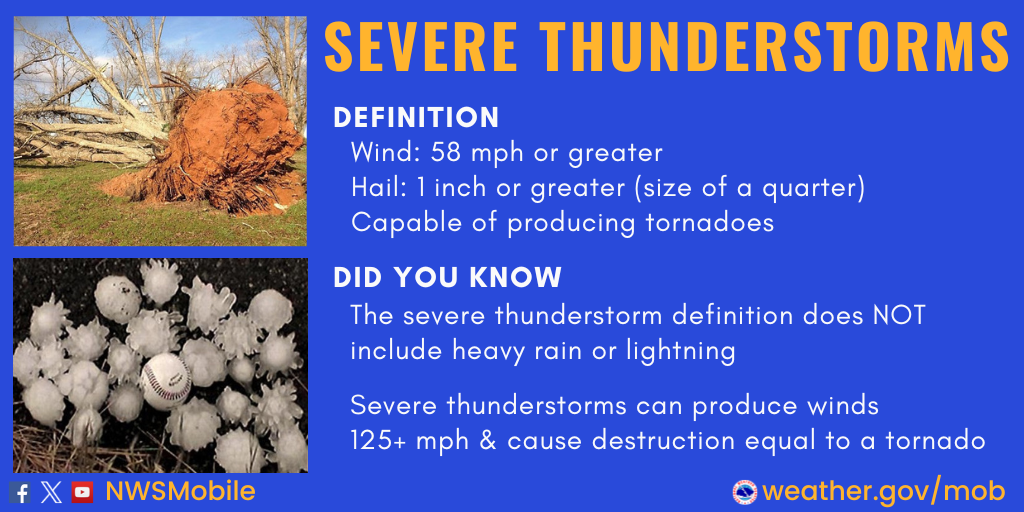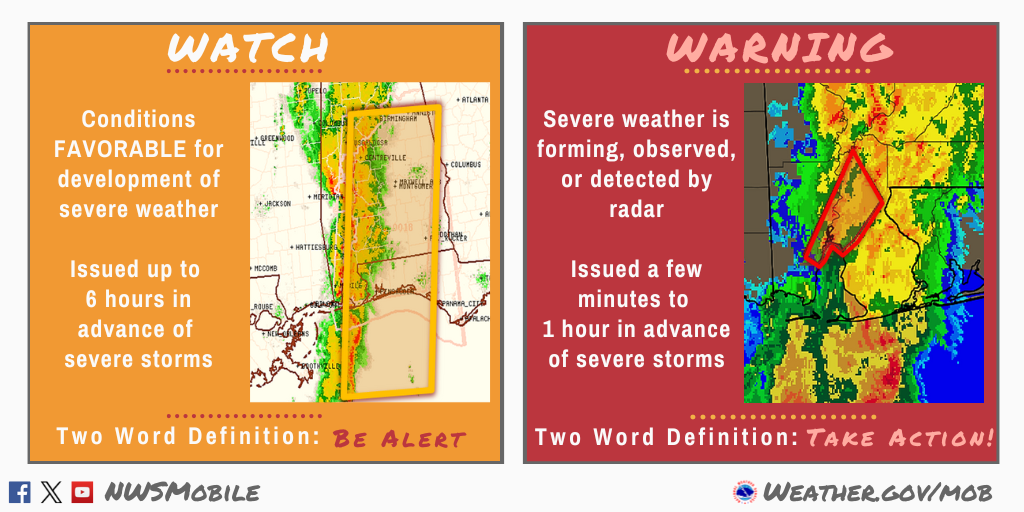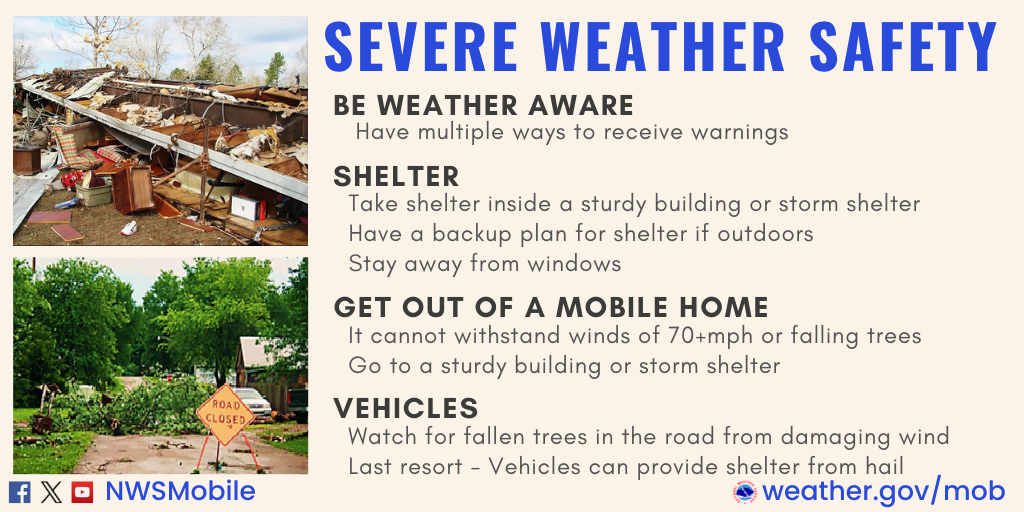Severe Weather Awareness Week
Severe Thunderstorms
Today is devoted to severe thunderstorms.
Thunderstorms are a common occurrence in Alabama, Mississippi and Florida any time of the day, month or year. There are about 2,000 thunderstorms in progress around the world at any given moment. However, less than 1% of these thunderstorms are classified as “severe”. Severe thunderstorms are defined as thunderstorms that produce 1 inch hail or larger and/or strong wind gusts of 58mph or greater. Severe hail that is 1 inch in diameter is roughly the size of a quarter.
All thunderstorms generate potentially deadly lightning. However, lightning in a thunderstorm does not necessarily mean that the thunderstorm is severe. Occasionally, a small percentage of severe thunderstorms produce tornadoes with little or no lightning at all.
Across the region, severe thunderstorms typically occur during the late afternoon and evening hours, but can develop at any time. While severe thunderstorms can occur any month of the year, the peak Severe Weather Season is during the spring months of March, April and May. Alabama, Mississippi and northwest Florida also have a secondary Severe Weather Season in the fall that typically runs from November through mid December.
Severe Thunderstorm WATCH
means conditions are favorable for the development of severe thunderstorms in and close to the watch area. People located in and around the watch area should keep an eye to the sky and listen to their NOAA All Hazards Weather Radio or tune to the local broadcast media for further weather information. Typically, watches last around 6 hours and cover a relatively large area.
Severe Thunderstorm WARNING
means either a severe thunderstorm is occurring, has been detected by National Weather Service Doppler Radar or a reliable report has been received. People in the warned area should take immediate action to protect their lives, lives of others, and their property. Tornadoes can and occasionally do accompany severe thunderstorms. Treat this warning the same as you would for a Tornado Warning by taking the proper safety precautions. Warnings are issued for smaller, more specific locations and generally last for less than one hour.
Severe Thunderstorm Safety Rules:
Thunderstorms typically do not last very long and will most often pass by your location in less than one hour.
The best defense against thunderstorms is to stay inside a sturdy, substantial building that can protect you from lightning, large hail, damaging winds, heavy rain and tornadoes.
If caught outside, find shelter immediately.
Once in a shelter, stay away from windows and avoid electrical equipment.
Be sure to secure loose objects outside as these objects often become dangerous flying debris in high winds.
Additional Information



